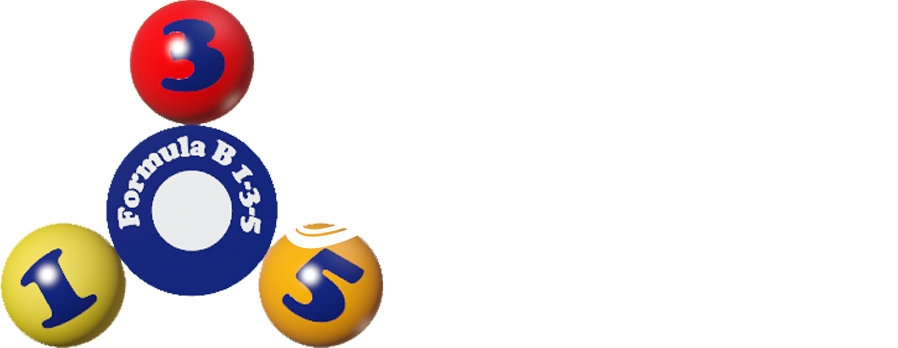Rules of the Game for FORMULA B-1-3-5 STANDARD OPEN
1. To play balls numbered from 1 to 15, a cue and a table are needed
2. For every legally potted object ball the player receives number of points equal to the ball number. There is no required sequence of which balls must be played. No shot needs to be called. Combination shots are allowed.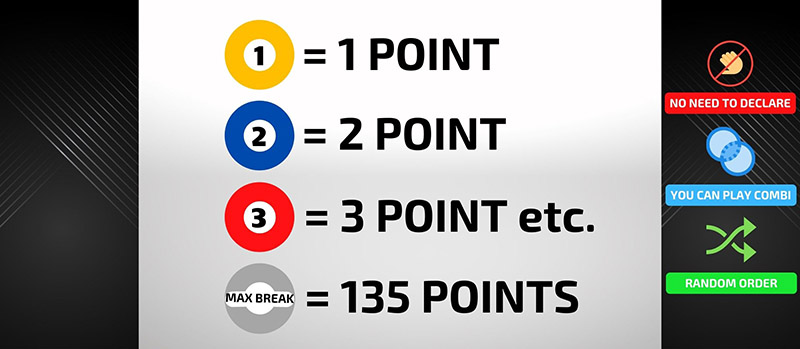
3. Racking – on the head spot ball number 1 is placed. In the second raw of the rack there are balls number 2 and 3. In the third row: ball number 15 takes the middle spot. Balls number 13 and 14 must touch the ball number 15.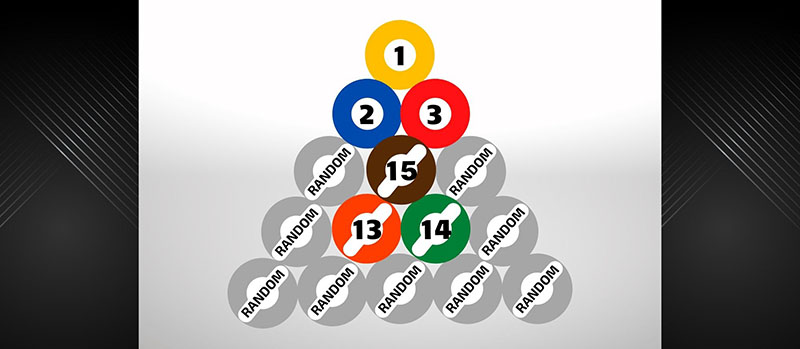
4. The game is played between two players until one of them wins a number of frames which had been agreed upon. The frame consists of both players' visits. The player with higher score wins the frame.
5. A single visit to the table in FORMULA B-1-3-5- STANDARD OPEN consists of:
- the break
- the attempt zero „0”
- additional attempts „+1”,”+2”,”+3”,”+4”
A miss or a foul made in the last additional attempt ends the visit.
At each visit the player can gain 135 points maximum. This is broken down to 15 points for a correct break and 120 points for potting all object ball without taking the cue ball in hand or any misses. Point value of all object ball equals 120.
6. The break – different variants
- correct break – the break is considered correct if at least one object ball is potted and the cue ball remains on the table. In such case a player receives extra 15 pts. for a correct break in addition to the points for the potted balls. Then the player begins their „0” attempt by potting the remaining object balls.
- dry break – if no object ball is potted on the break and the cue ball remains on the table, the player begins “0” attempt with no points
- foul break – if, while breaking, the player commits a foul and no object ball are potted, they continue playing but the cue ball must be placed on a head string and 15 points are deducted from their score – the player thus begins the “0” attempt with -15 pts.
foul break + object ball(s) potted – if during the break a foul is committed and some object balls have been potted 15 points are deducted from the player’s overall score (the foul penalty). Points for the potted balls are added to the score. The player begins the “0” attempt from the string line.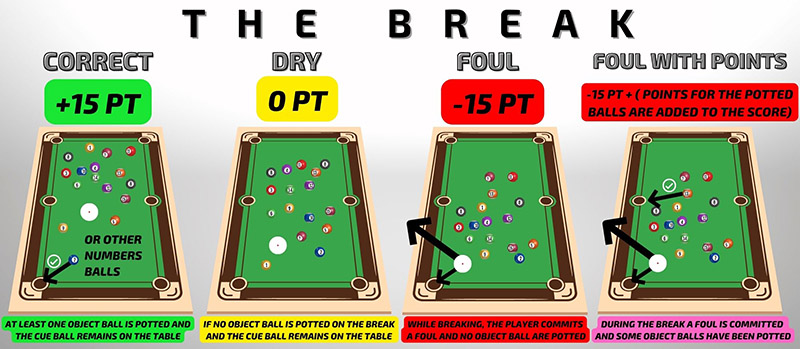
7. Options for beginning the zero attempt „0”
After each of the aforementioned breaking variants the player begins their “0” attempt in which they have two options to choose from:
play as it is – the player begins shooting the balls with the cue ball on the spot where it had stopped after the break
cue ball in hand – the player can take the cue ball and place it anywhere on the table. This results on deduction of 5 pts.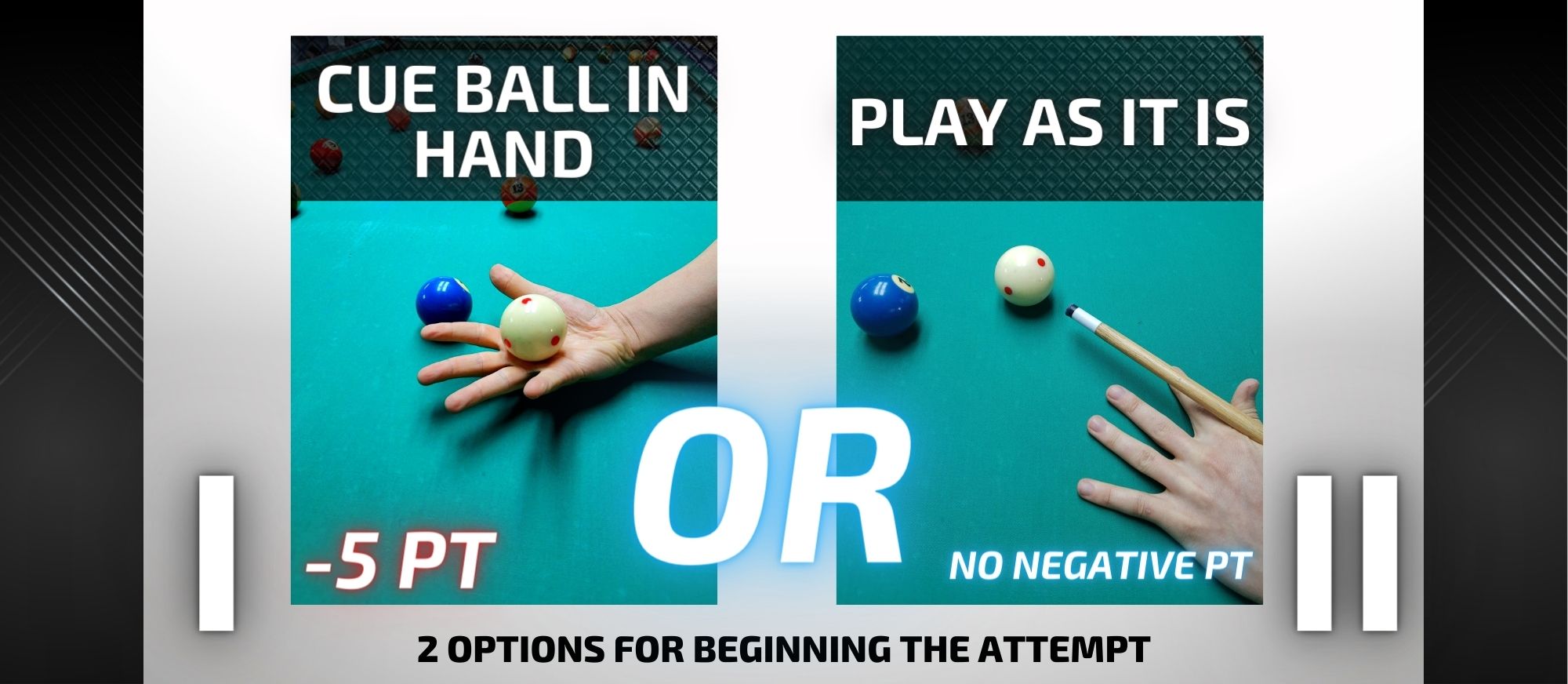
8. Options for beginning additional attempts
After a mistake during the zero attempt „0” and after a mistake during next attempts the player has two different options to start his additional attempts „+1”, „+2”, „+3”, „+4”:
- play as it is – the player begins shooting the balls with the cue ball on the spot where it had stopped after the break
- cue ball in hand – the player can take the cue ball and place it anywhere on the table. This results on deduction of 5 pts.
9.Variants for ending the move „0” and additional moves which means the end of the attempt.
a miss – if no object ball is potted – in this case no points are deducted
a foul – 15 points arededucted
When a player runs out a rack
10. Every foul (with the exception of a foul on break) results in 15 pts. deduction. There are the following fouls:
Cue ball potted or out of the table
Object ball out of the table
The cue ball makes no contact with an object ball
One foot on the ground - if the player doesn’t touch the ground with any part of at least one foot it is considered a foul
Touching the cue ball (excluding the ‘cue ball in hand’) or any other ball on the table – the player is solely responsible for any object which can contribute to this type of a foul; i.e. the table, chalk, equipment, clothes, hair, the body and the cue ball when held in hand.
An unintentional touch is a foul.
Balls in motion – the cue ball can only be played when all the balls on the table have come to a halt
Double contact/frozen ball - if, whilst playing the cue ball, the cue makes more than one contact with the cue ball, it is a foul
11.In the case the players take their visits alternately, their frames are also played alternately.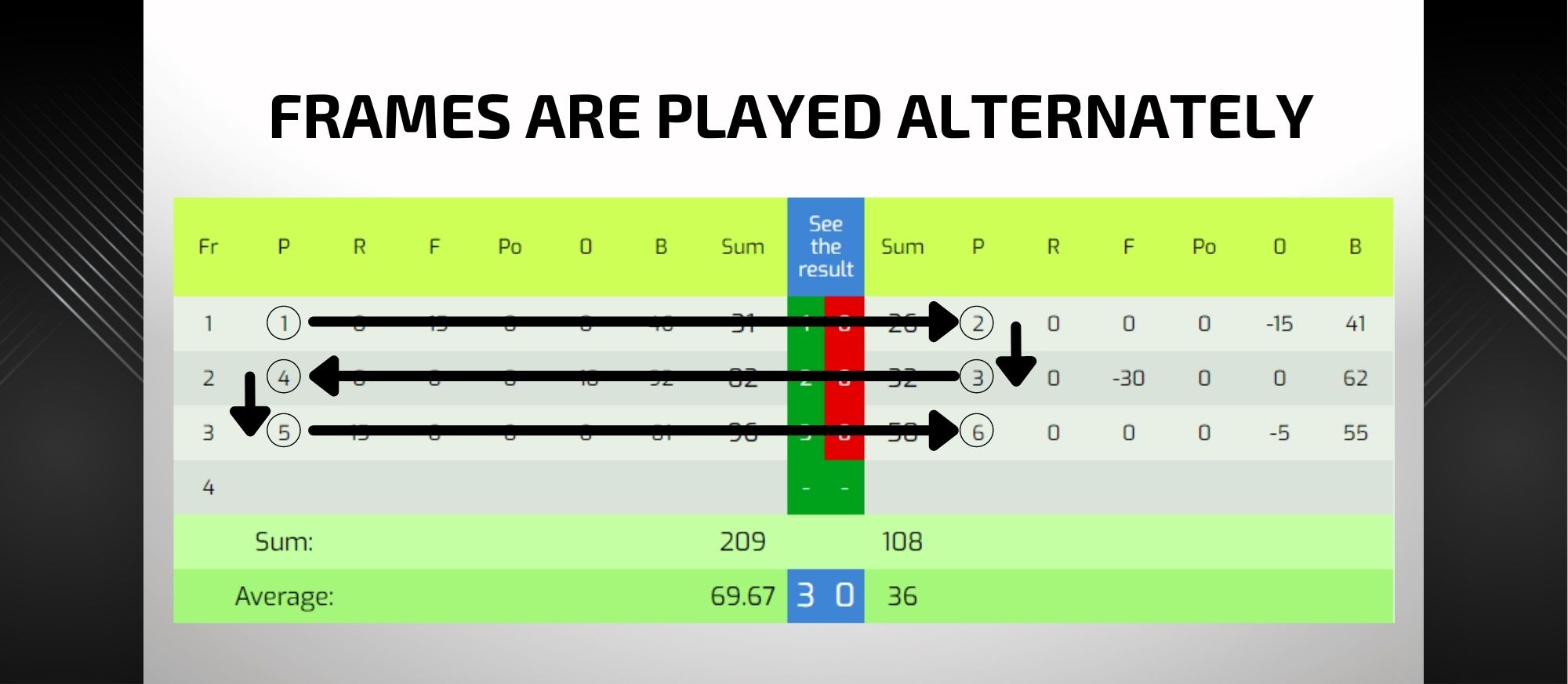
12.In the case both players gain equal amount of points during their visits they both gain one frame. If there’s a draw in frames (i.e. during a race to three there’s a 2-2 draw in frames) and both players gain equal amounts of points during their visits in the deciding frame, the result is a draw (3-3 in the example). In such case victory is decided upon the total amount of point gained throughout all frames played by both players. If it also means a draw players will play an additional frame or more, until victory is decided.
13.Players may play on one table – they will take their visits alternately. It is also allowed to play on a number of tables with more than ten players playing at the same time.
14.During a broadcast game when each player plays at a separate table, in order to it attractive to viewers, players visit their tables at the same time. Each frame begins when each player has finished the previous one.
15. Receiving hints from other people during the attempt is forbbidden. In case of cheating, the player will be punished with a warning. Another trial of cheating costs disqualification penalty for the player and also for the one who was helping for minimum 3 months from Formula B135 competitions.

